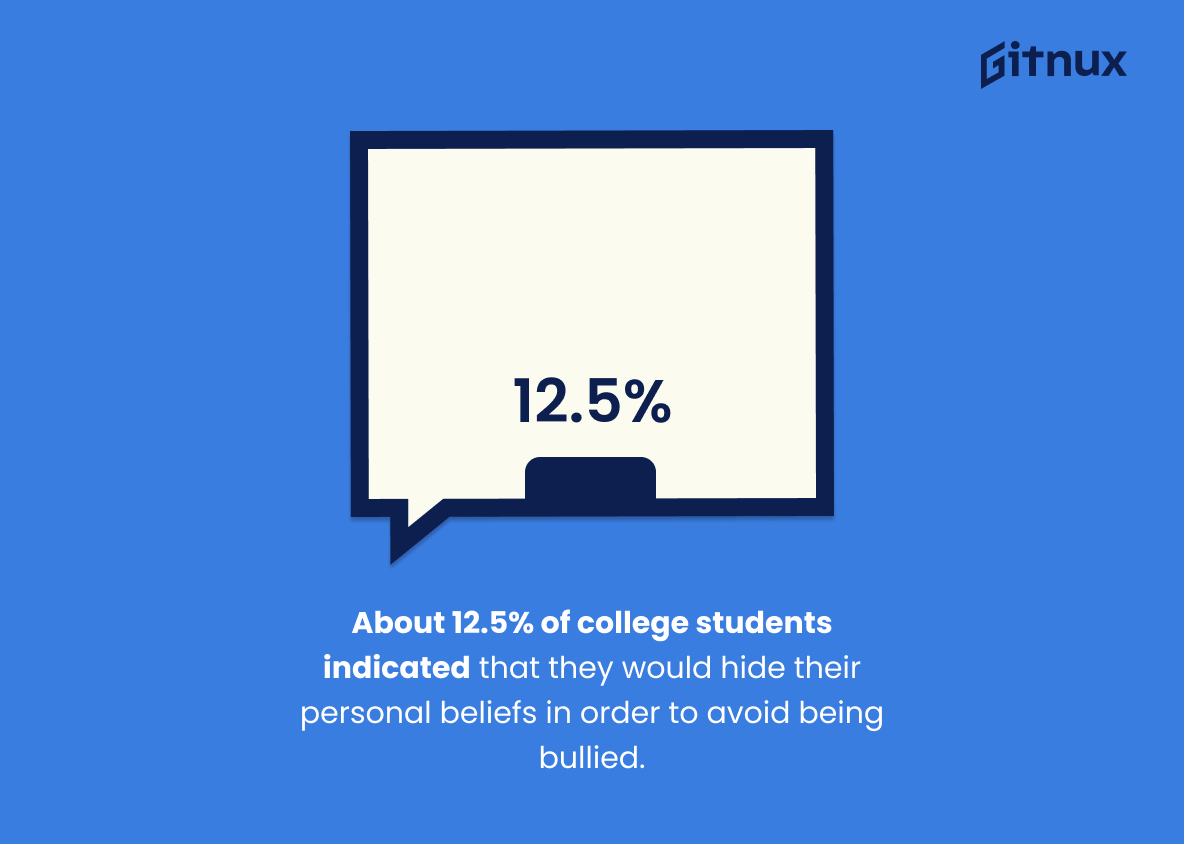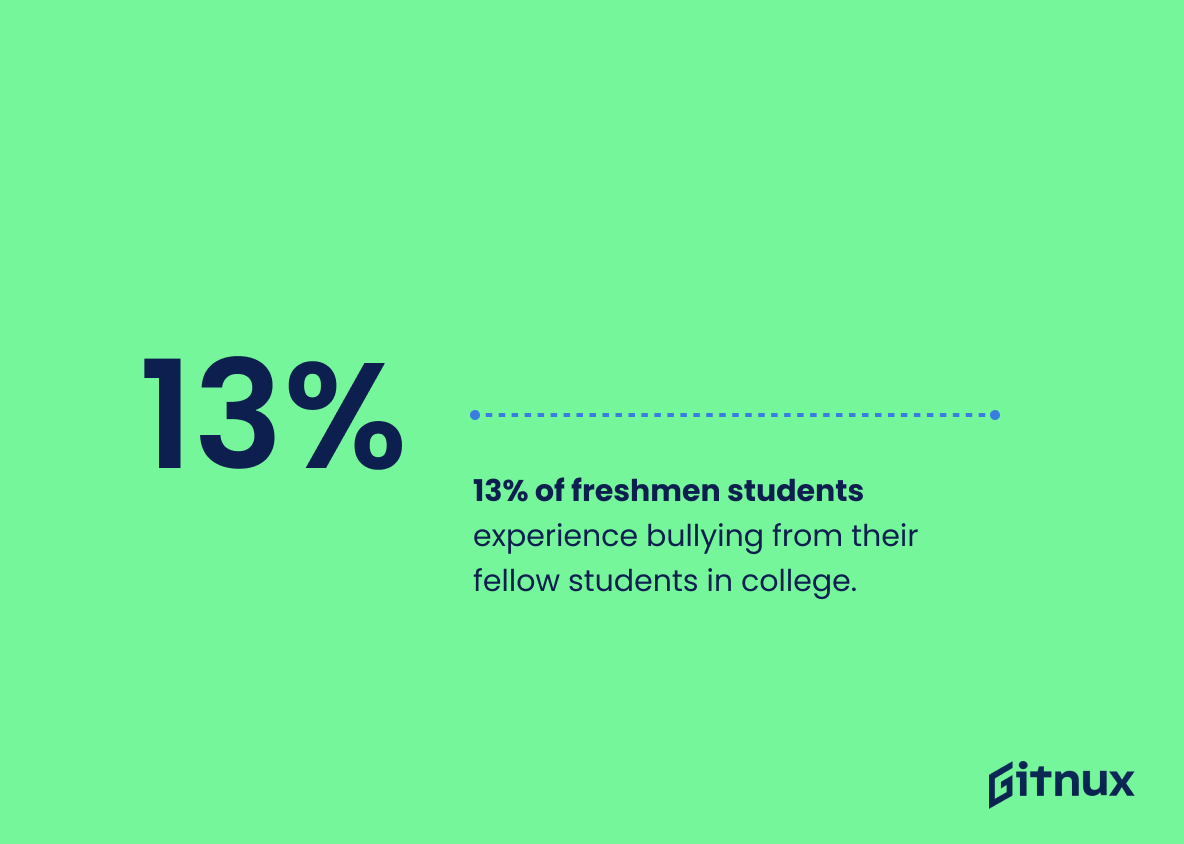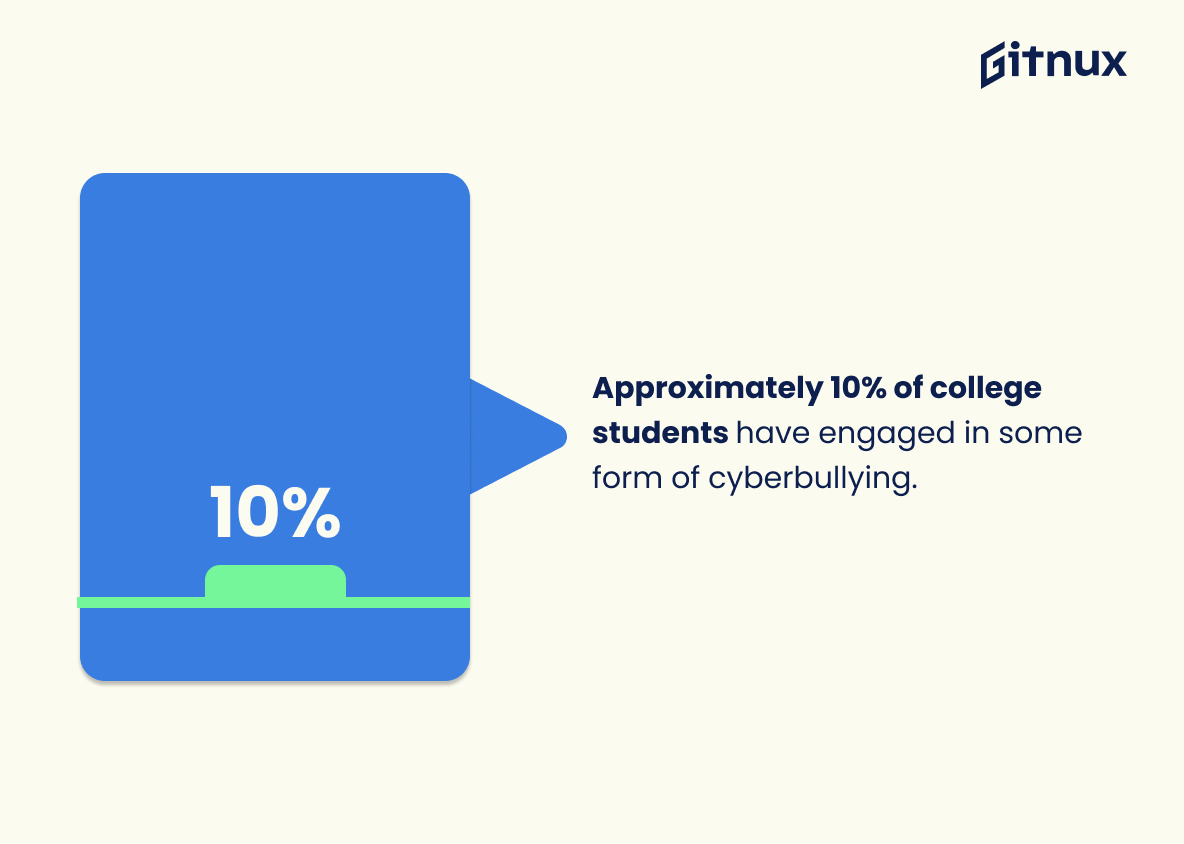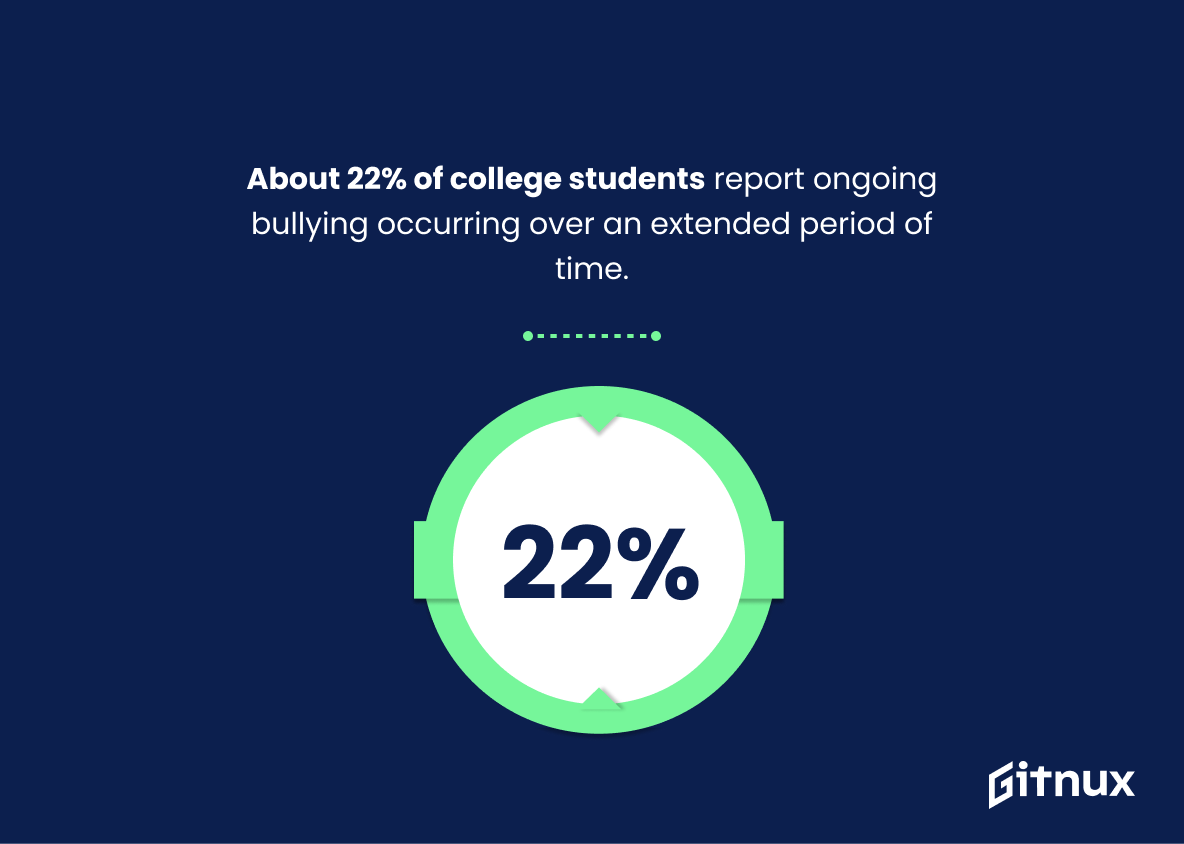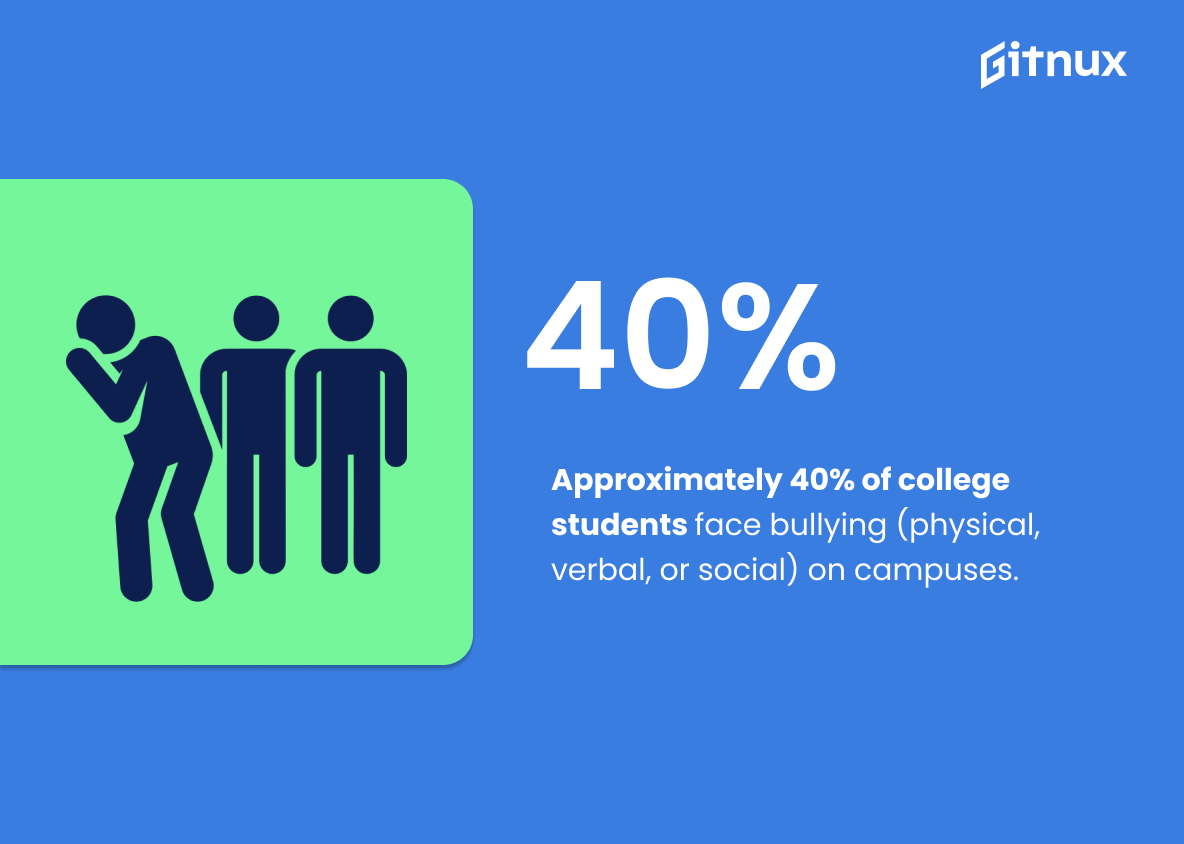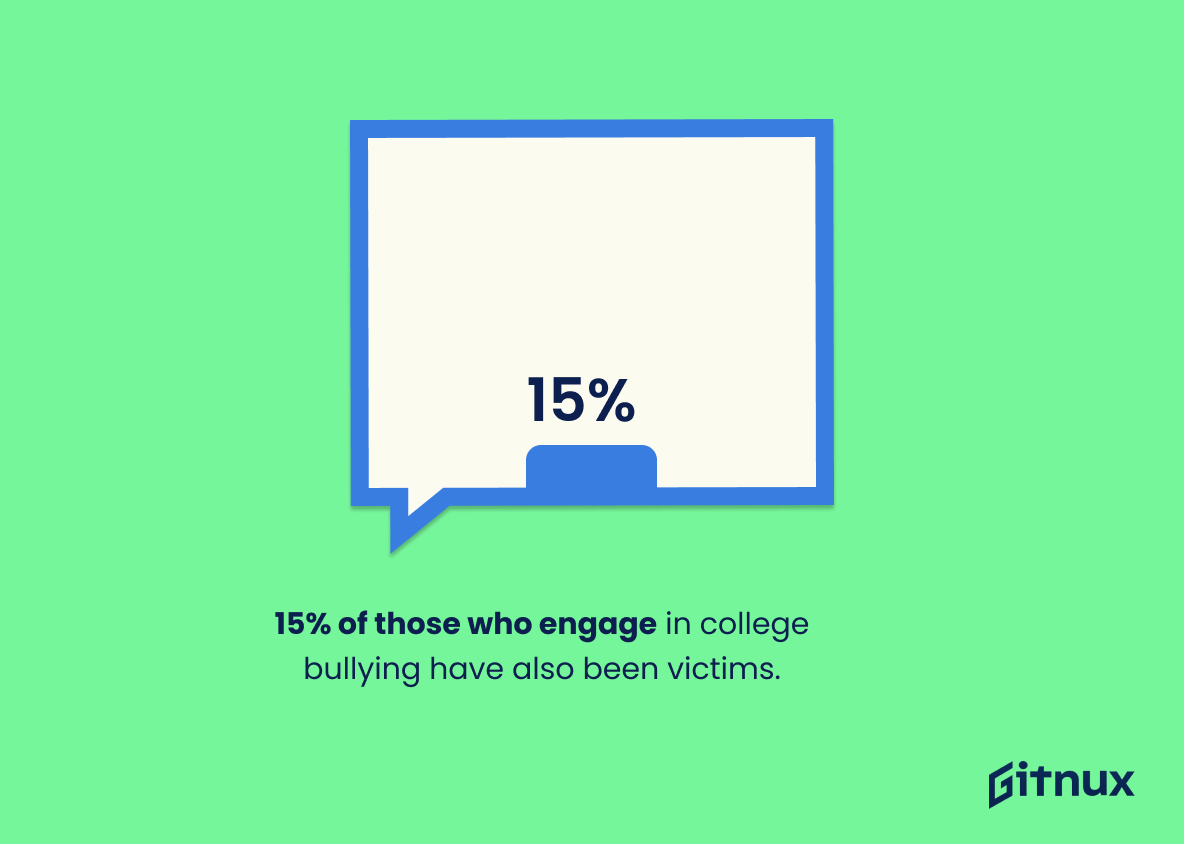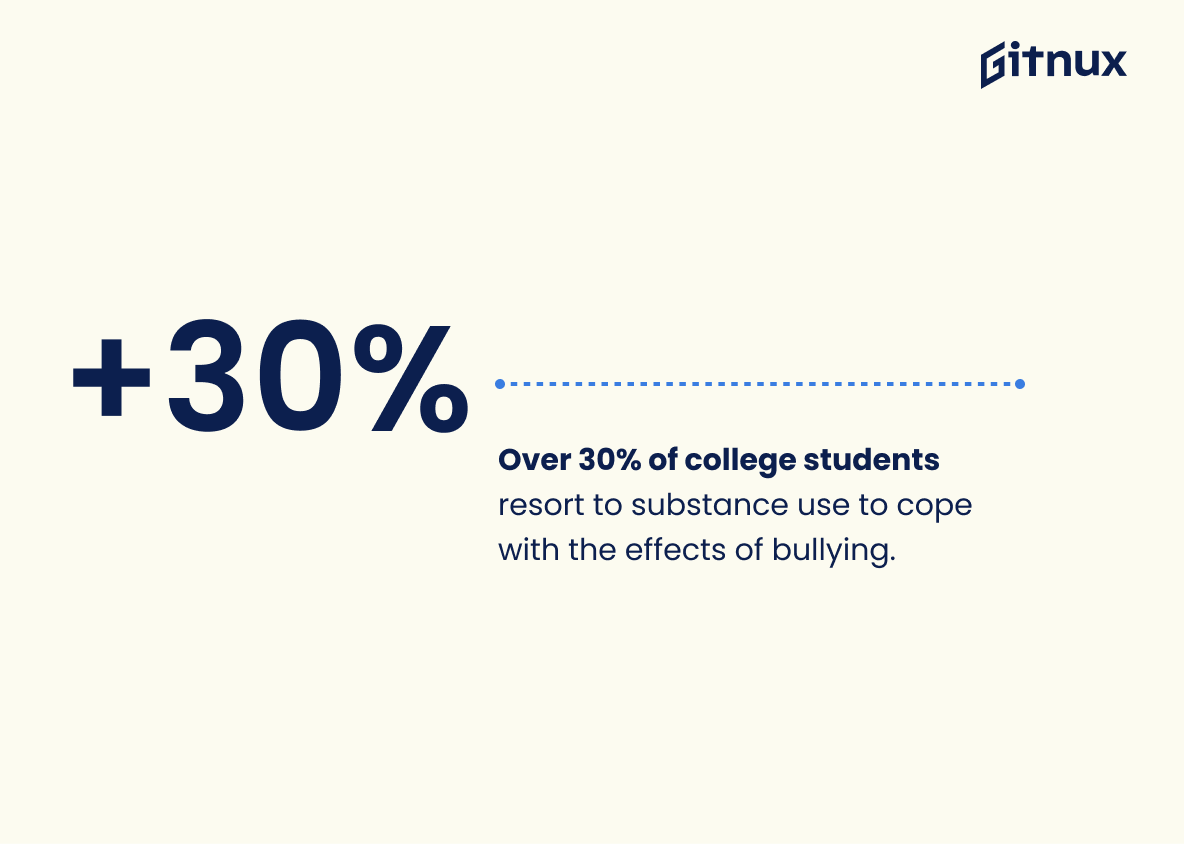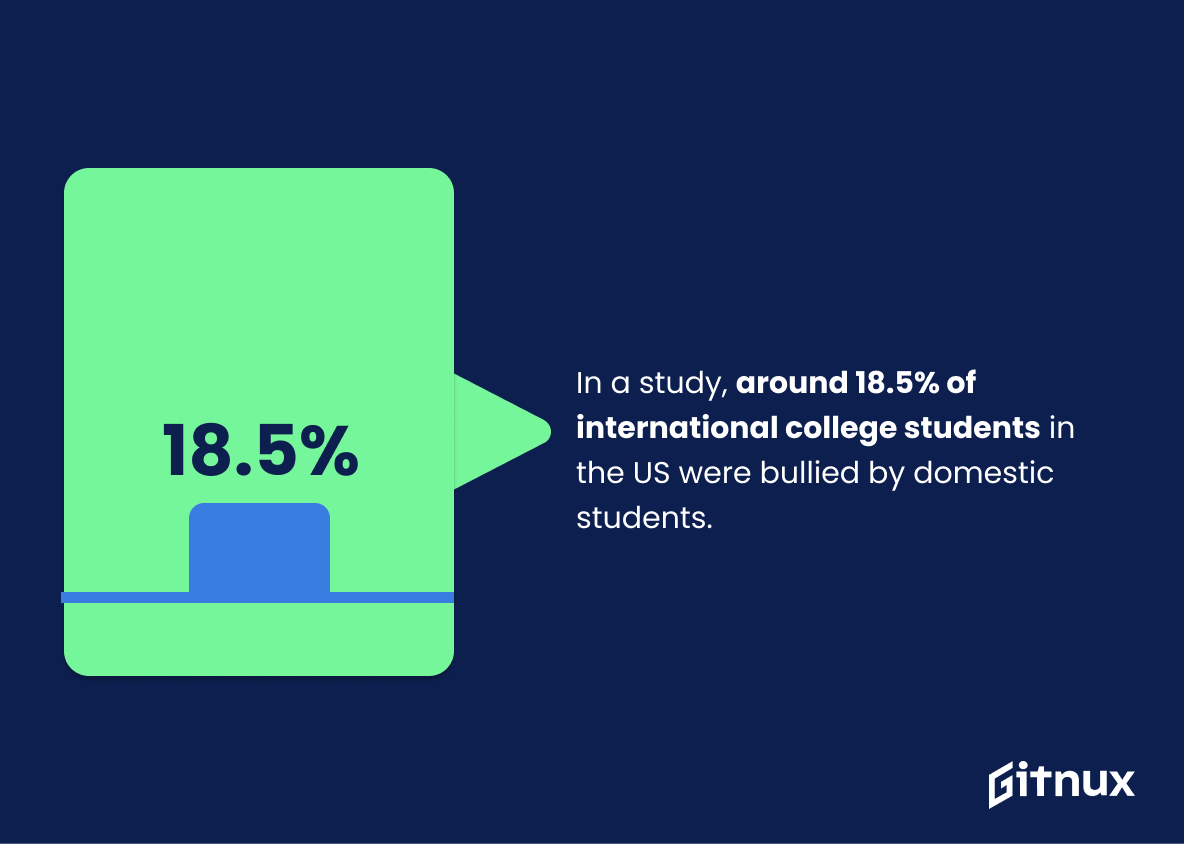Bullying on college campuses is a serious issue that affects many students. Recent studies have revealed some alarming statistics about the prevalence of bullying in higher education institutions, including: around 20% of college students report experiencing bullying while on campus; over 83.8% of those who have been bullied identified as sexual minorities; approximately 35.2% of cyberbullying victims are women; 25% of college students have experienced cyberbullying at some point; 61% feel powerless to intervene when witnessing bullying incidents; 45% experience depression due to being bullied and 16%, 18%, 12.5%, 10%, 30%, 22%, 40 %, 15 % and 18.5 % reported other forms such as living situation related-bullying, reduced academic performance due to being bullied, hiding personal beliefs for fear or being targeted by bullies , faculty/staff contribution towards bullyings cases , freshmen student’s experiences with their peers and international student’s experiences respectively . Moreover more than half (51%) felt that their colleges could handle the situation better if they had intervened earlier . It is clear from these figures that there needs to be greater awareness among both staff members and fellow students regarding this problem so it can be addressed effectively before it escalates further
This statistic is a powerful indicator of the prevalence of bullying on college campuses. It serves as a reminder that bullying is a real issue that affects a significant portion of college students, and that it is something that needs to be addressed.
Approximately 35.2% of cyberbullying victims in higher education institutions are women.
This statistic is a stark reminder of the prevalence of cyberbullying among female students in higher education institutions. It highlights the need for increased awareness and prevention of cyberbullying on college campuses, as well as the need for support for those who have been affected by it.
Bullying On College Campuses Statistics Overview
Roughly 45% of college students who experience bullying also report experiencing depression.
This statistic is a powerful indicator of the far-reaching effects of bullying on college campuses. It shows that bullying can have a significant impact on a student’s mental health, and that depression is a common consequence of bullying. This statistic is an important reminder that bullying should not be taken lightly, and that it can have serious and long-lasting consequences.
About 12.5% of college students indicated that they would hide their personal beliefs in order to avoid being bullied.
This statistic is a stark reminder of the prevalence of bullying on college campuses. It shows that even in an environment that is supposed to be a safe space for learning and growth, students are still feeling the need to hide their personal beliefs in order to avoid being targeted. This statistic is a call to action for college administrators to take a closer look at the issue of bullying and take steps to ensure that all students feel safe and respected on campus.
13% of freshmen students experience bullying from their fellow students in college.
This statistic is a stark reminder of the prevalence of bullying on college campuses. It highlights the fact that bullying is an issue that affects a significant portion of freshmen students, and that it is something that needs to be addressed. It serves as a call to action for college administrators, faculty, and students to take steps to combat bullying and create a safe and supportive environment for all students.
Approximately 10% of college students have engaged in some form of cyberbullying.
This statistic is a stark reminder of the prevalence of cyberbullying on college campuses. It highlights the need for increased awareness and education about the issue, as well as the need for more effective strategies to combat it. It also serves as a warning to college students to be mindful of their online behavior and to take steps to protect themselves and others from cyberbullying.
About 22% of college students report ongoing bullying occurring over an extended period of time.
This statistic is a stark reminder of the prevalence of bullying on college campuses. It highlights the fact that bullying is not just a problem that affects a few students, but rather a widespread issue that affects a significant portion of the college population. This statistic is an important reminder that college campuses need to take steps to address bullying and create a safe and supportive environment for all students.
Around 40% of college students experience either physical, verbal, or social bullying during their time on campuses.
This statistic is a stark reminder of the prevalence of bullying on college campuses. It highlights the fact that a significant portion of college students are being subjected to physical, verbal, or social bullying, and that this is an issue that needs to be addressed. It serves as a call to action for college administrators, faculty, and students to take steps to combat bullying and create a safe and supportive environment for all students.
15% of those who engage in college bullying have also been victims.
This statistic is a powerful reminder that bullying is a complex issue that can affect anyone, regardless of their background. It highlights the fact that many people who bully have also experienced bullying themselves, and that it is important to take a holistic approach to addressing the issue. It also serves as a reminder that bullying is not a one-way street, and that it is important to consider the experiences of both the bully and the victim when trying to prevent and address bullying on college campuses.
Over 30% of college students resort to substance use to cope with the effects of bullying.
This statistic is a stark reminder of the damaging effects of bullying on college campuses. It highlights the fact that many students are turning to substance use as a way to cope with the trauma of being bullied. This statistic is a call to action for college administrators to take a more proactive approach to addressing bullying on their campuses.
In a study, about 18.5% of international college students in the US experienced bullying from domestic students.
This statistic is a powerful reminder of the prevalence of bullying on college campuses, particularly for international students. It highlights the need for greater awareness and action to be taken to ensure that all students feel safe and respected on campus. It also serves as a call to action for universities to take steps to address this issue and create a more inclusive and welcoming environment for all students.
Conclusion
Bullying on college campuses is a serious issue that affects many students. The statistics presented in this blog post demonstrate the prevalence of bullying among college students, as well as its impact on their mental health and academic performance. From these numbers, it can be seen that sexual minorities are particularly vulnerable to being bullied while women are more likely to experience cyberbullying than men. Additionally, faculty and staff have been found to contribute significantly to incidents of bullying reported by college students. It is clear from these findings that colleges must take steps towards creating an environment where all members feel safe and respected if they want their student body to thrive academically and emotionally.
References
0. – https://www.www.tandfonline.com
1. – https://www.www.jfynet.org
2. – https://www.digitalcommons.usu.edu
3. – https://www.commons.emich.edu
4. – https://www.link.springer.com
5. – https://www.utminers.utep.edu
6. – https://www.ernestopriego.com
7. – https://www.www.ncbi.nlm.nih.gov
8. – https://www.files.eric.ed.gov

